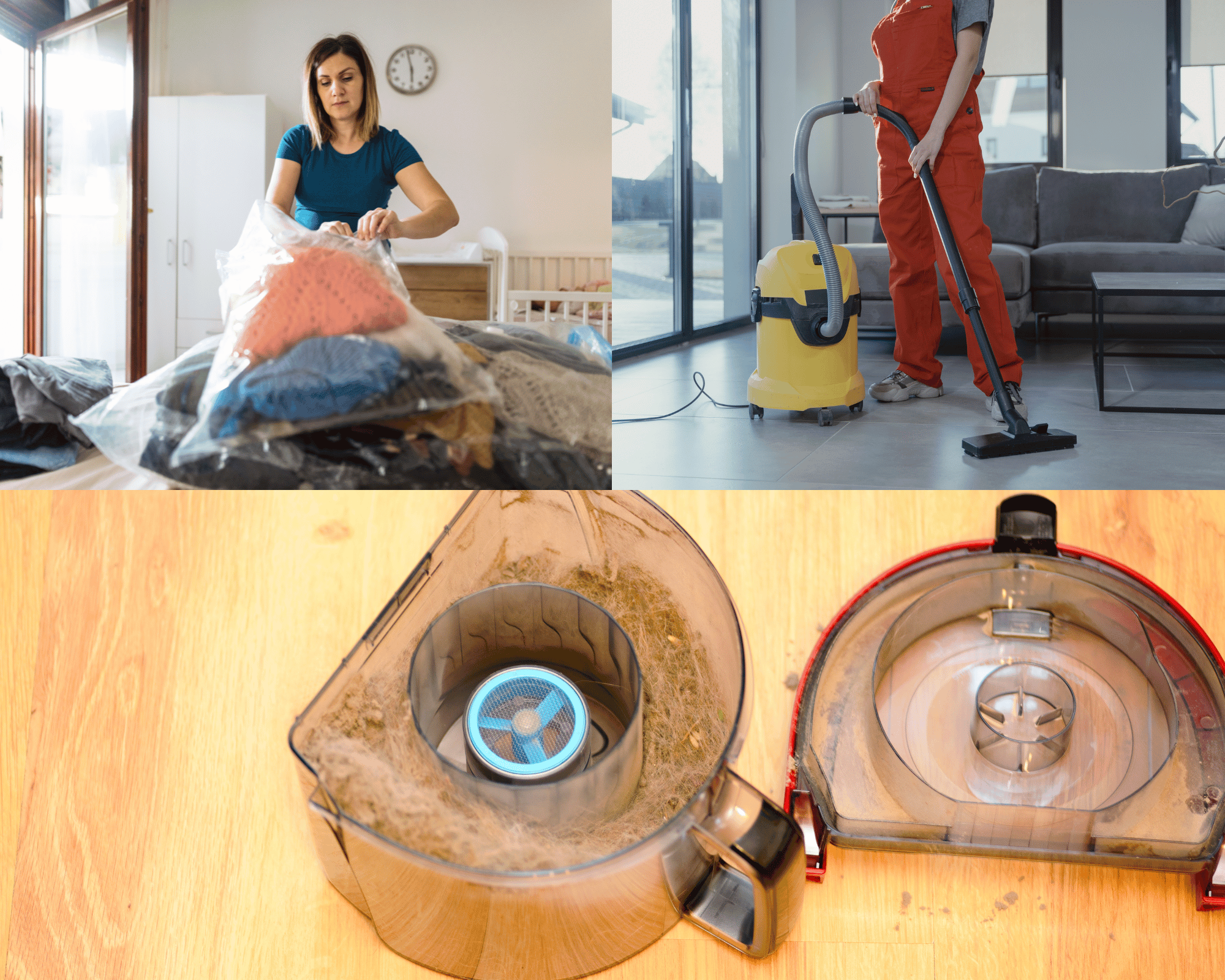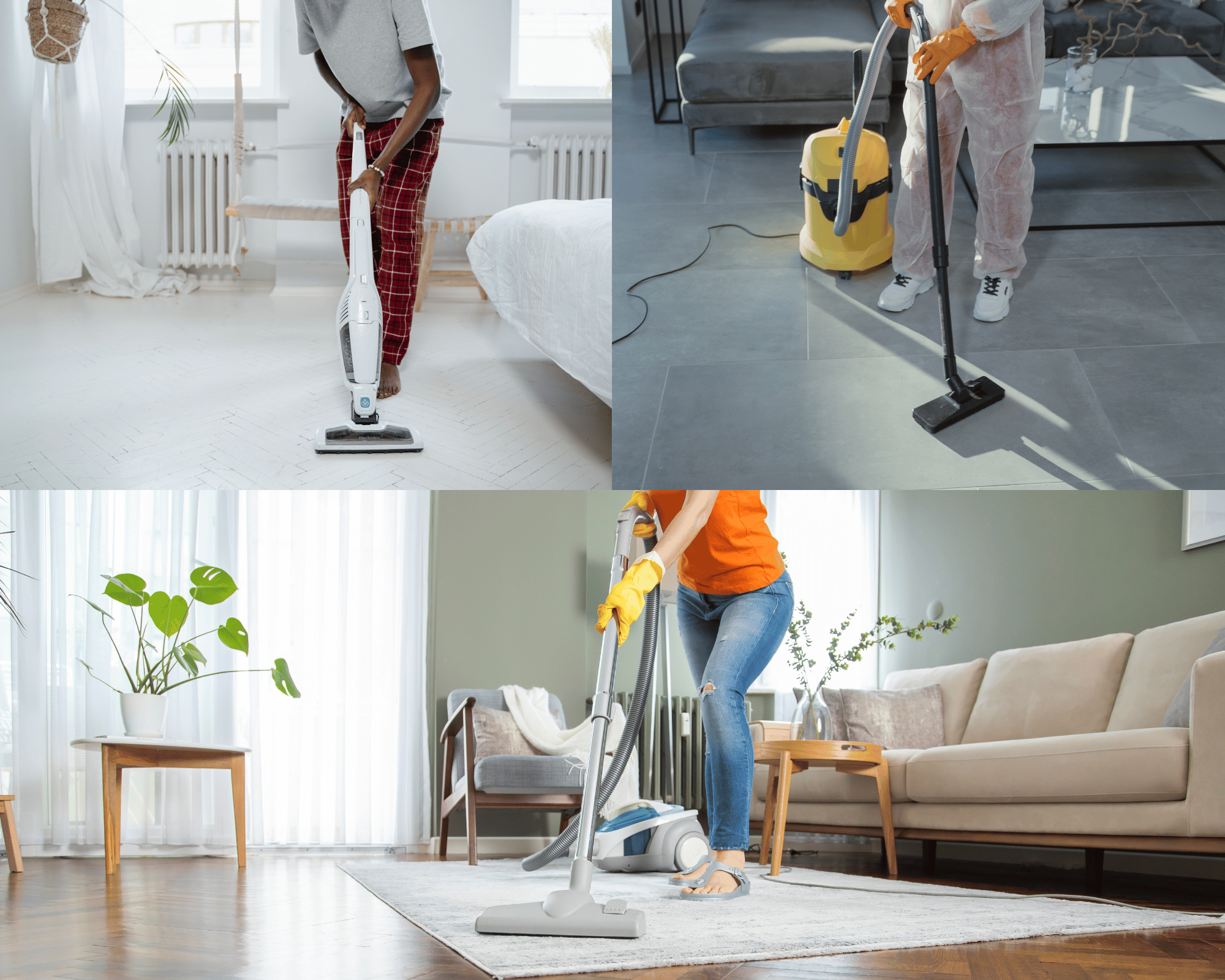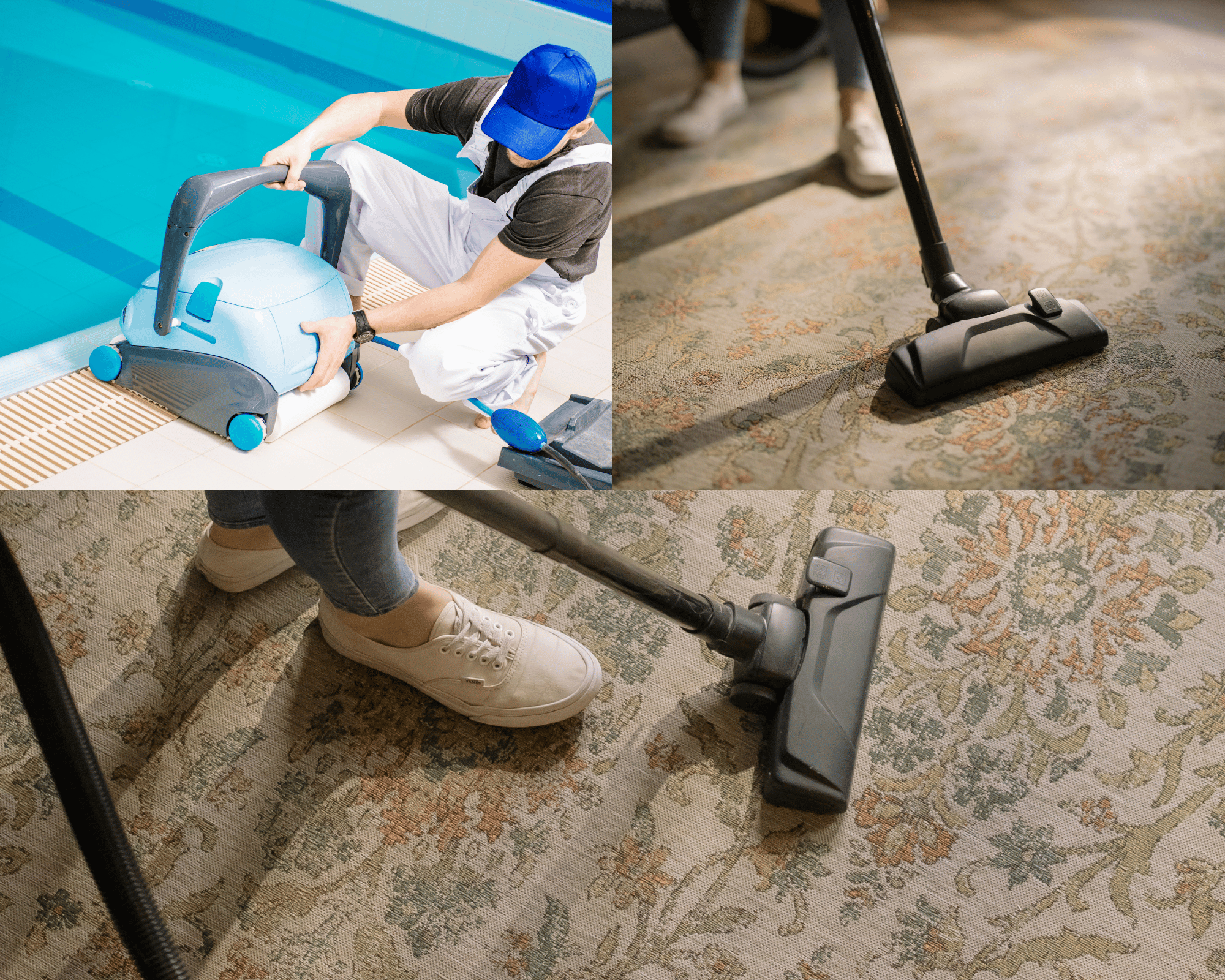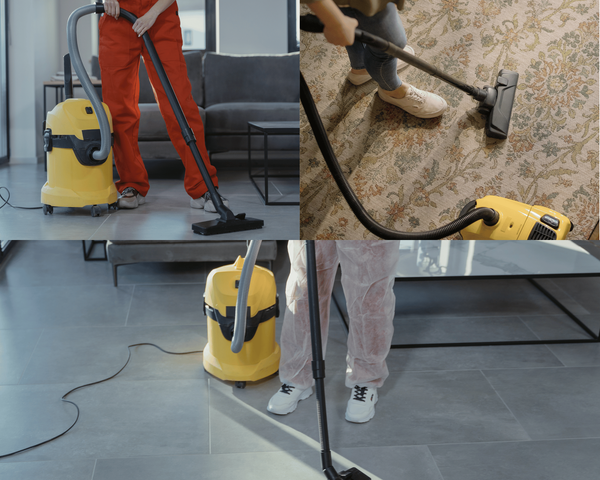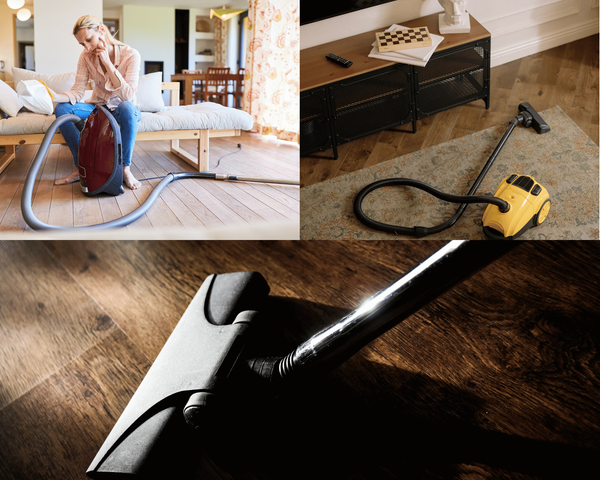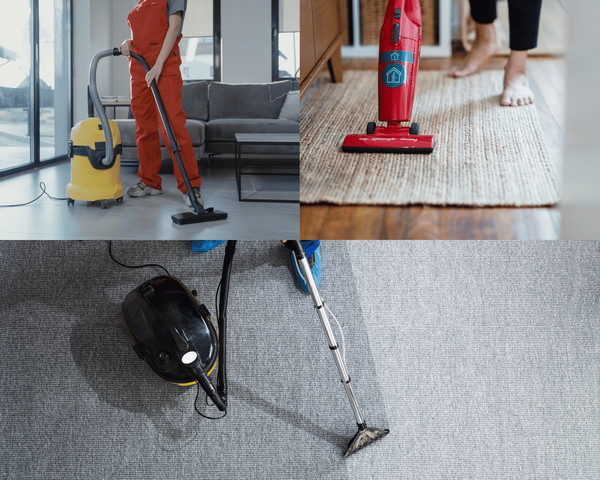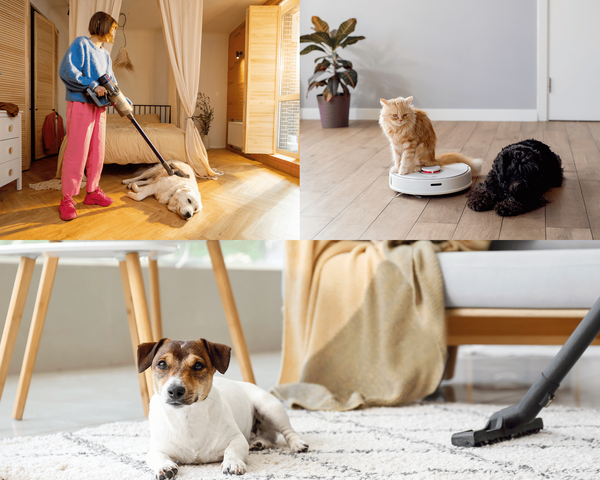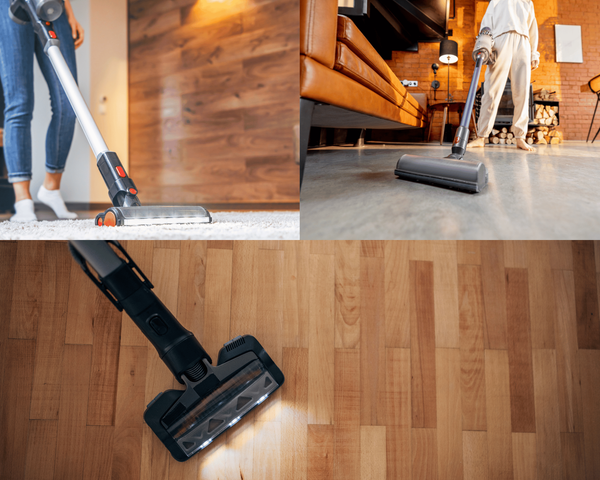Bagged vacuum cleaners are the unsung heroes of household cleaning, quietly ensuring our floors remain spotless. However, like any trusty sidekick, they require a bit of TLC to keep them running smoothly. Regular maintenance not only extends the life of your vacuum but also ensures it operates at peak efficiency. So, how do you go about maintaining your vacuum cleaner effectively?
Key Takeaways:
- Learn expert tips to maintain your bagged vacuum cleaner and avoid costly repairs.
- Discover step-by-step tips to clean your vacuum's filter today for enhanced performance.
- Learn how to store your vacuum cleaner effectively to maximize its lifespan.
Understanding Bagged Vacuum Maintenance
Bagged vacuum cleaners are the unsung heroes of household cleaning, quietly ensuring our floors remain spotless. However, like any trusty sidekick, they require a bit of TLC to keep them running smoothly. Regular maintenance not only extends the life of your vacuum but also ensures it operates at peak efficiency. So, how do you maintain a bagged vacuum cleaner effectively?
First, let’s talk about the basics. Regularly check the vacuum bag. It’s advisable to replace the bag regularly, ideally when it’s about two-thirds full. A full bag can significantly reduce suction power, making your cleaning efforts less effective. Replacing the bag at this point ensures there is enough space for dirt and debris to enter, effectively trapping all the dust. This simple step can prevent the motor from overworking and potentially burning out. Additionally, always ensure that you’re using the correct type of bag for your model. Using the wrong bag can lead to dust leakage and reduced performance. Proper maintenance, including filter care and following manufacturer guidelines, is essential to prevent performance issues and extend the life of your appliance.
Safety Precautions
When using a vacuum cleaner, it’s essential to take safety precautions to avoid accidents and injuries. Here are some safety tips to keep in mind:
- Read the User Manual: Always read the user manual before using a vacuum cleaner, especially if you’re new to using one. This will help you understand the specific features and safety instructions for your model.
- Inspect Before Use: Make sure the vacuum cleaner is in good working condition before using it. Check for any damage or wear and tear on the cord, plug, and other parts. A damaged vacuum cleaner can pose a safety risk.
- Avoid Water and Humidity: Never use a vacuum cleaner near water or in humid environments, as this can cause electrical shock or damage to the machine. Keep your vacuum cleaner dry to ensure safe operation.
- Keep Children and Pets Away: While the vacuum cleaner is in use, keep children and pets at a safe distance. They may accidentally get tangled in the cord or come too close to the machine.
- Wear Protective Gear: When cleaning up debris or dust, consider wearing protective gear such as gloves and safety glasses. This can protect you from any sharp objects or allergens that might be present.
- Don’t Overload the Vacuum: Avoid overloading the vacuum cleaner with too much dust or debris. This can cause the machine to overheat or break down. Regularly empty the vacuum bag to maintain optimal performance.
- Regular Filter Maintenance: Regularly check and maintain the vacuum cleaner’s filters to ensure they’re clean and functioning properly. Clean filters help maintain the vacuum’s suction power and improve air quality.
By following these safety precautions, you can ensure that your vacuum cleaner operates safely and efficiently, providing you with a clean and healthy home environment.
Cleaning the Filter on a Bagged Vacuum
Cleaning the filter on a bagged vacuum is akin to giving your car a regular oil change. It keeps everything running smoothly and efficiently. Proper filter cleaning enhances vacuum performance, ensuring that dust and allergens are effectively trapped. But how do you clean bagged vacuum filters like a pro?
Begin by consulting your vacuum’s manual to locate the filter. Once found, remove it carefully. If it’s a washable filter, rinse it under lukewarm water until the water runs clear. Avoid using soap as it can leave a residue. Allow the filter to dry completely before reinserting it. For non-washable filters, a gentle tap to remove excess dust or a quick vacuum with a handheld device can do wonders. Regular filter maintenance can prevent clogs and maintain optimal airflow. Additionally, remember to regularly check and replace filters to ensure your vacuum operates at peak performance.
Routine Maintenance Schedule
To keep your vacuum cleaner running efficiently and effectively, it’s essential to follow a routine maintenance schedule. Here’s a suggested schedule to help you stay on top of vacuum cleaner maintenance:
- Daily:
- Empty the Dustbin or Bag: After each use, empty the dustbin or replace the bag to prevent dust and debris from accumulating. This helps maintain the vacuum’s suction power.
- Check Filters: Quickly inspect the vacuum cleaner’s filters and clean or replace them as needed to ensure optimal performance.
- Weekly:
- Clean the Brush Roll: Remove hair and debris from the brush roll and other moving parts. This prevents tangling and ensures the vacuum cleaner operates smoothly.
- Inspect the Belt: Check the vacuum cleaner’s belt for wear and tear. Replace it if it’s worn or damaged to maintain proper functionality.
- Monthly:
- Deep Clean Filters: Perform a thorough cleaning of the vacuum cleaner’s filters and other parts. This ensures they’re free from dust and debris, maintaining the vacuum’s efficiency.
- Check Suction Power: Test the vacuum cleaner’s suction power. If it seems weak, adjust or replace the belt as needed.
- Every 3-6 Months:
- Replace Bags or Filters: Replace the vacuum cleaner’s bag or filter as recommended by the manufacturer. This helps maintain optimal performance and air quality.
- Inspect Hoses and Attachments: Check the vacuum cleaner’s hoses and attachments for blockages or damage. Clear any obstructions to ensure smooth operation.
- Every 6-12 Months:
- Professional Servicing: Have your vacuum cleaner serviced by a professional. This ensures it’s running efficiently and effectively, and can help identify any potential issues before they become major problems.
By following this routine maintenance schedule, you can help extend the life of your vacuum cleaner and ensure it continues to perform optimally. Regular maintenance not only keeps your vacuum cleaner in top shape but also ensures your home remains clean and dust-free.
Bagged Vacuum Cleaner Storage Tips
Storing your vacuum cleaner properly is like tucking it into bed after a hard day's work. The right storage solutions can significantly extend its lifespan. So, what are the best bagged vacuum cleaner storage solutions?
Firstly, ensure your vacuum is stored in a dry, cool place. Excessive heat or moisture can damage the motor and other components. If space is a concern, consider wall-mounted storage solutions or vacuum stands that keep the device off the floor. Additionally, always wrap the cord neatly to prevent tangling or fraying. These simple storage tips can keep your vacuum in top shape, ready for its next cleaning mission.
How Often to Replace Vacuum Cleaner Bags suction power
Knowing when and why to replace bagged vacuum cleaner bags is crucial for maintaining consistent cleaning performance. A full or damaged bag can lead to reduced suction and even motor damage. Waiting too long to replace or clean the bag can diminish the vacuum's suction power and hinder its efficiency. So, how often should you replace these bags?
Typically, vacuum bags should be replaced every 1-2 months, depending on usage. However, if you notice a drop in suction or if the bag feels heavy, it’s time for a change. Regular replacement not only ensures efficient cleaning but also prevents dust and allergens from being released back into the air. Stay ahead with timely vacuum bag replacements to keep your home clean and your vacuum running smoothly.
Troubleshooting Bagged Vacuum Cleaners brush roll
Even the most reliable vacuums can encounter hiccups. Troubleshooting bagged vacuum cleaners can save you from unnecessary repairs and extend the life of your device. So, what are some common issues and how can you address them?
If your vacuum loses suction, check for blockages in the hose or attachments. A simple unclogging can often restore full functionality. If the vacuum is overheating, ensure the bag isn't full and the filter is clean. Strange noises might indicate a foreign object lodged in the brush roll or a loose belt. Regular maintenance and prompt troubleshooting can keep your vacuum in tip-top shape, ready to tackle any mess.
Summary
Vacuum cleaner maintenance tips are not rocket science, but they do require a bit of attention and care. By following these expert tips, you can avoid costly repairs and keep your cleaner efficient. From regular bag replacements to proper filter cleaning and storage solutions, each step plays a vital role in ensuring your vacuum’s longevity and performance. Remember, a well-maintained vacuum is a happy vacuum, ready to serve you for years to come.
FAQ
Q1: How often should I clean the filter on my bagged vacuum cleaner?
A1: It's recommended to clean the filter every 3-6 months, depending on usage. Regular cleaning ensures optimal performance and prevents clogs.
Q2: Can I use any type of bag for my vacuum cleaner?
A2: No, it's important to use the specific bag designed for your vacuum model. Using the wrong bag can lead to dust leakage and reduced efficiency.
Q3: What should I do if my vacuum cleaner loses suction?
A3: Check for blockages in the hose or attachments, ensure the bag isn't full, and clean the filter. These steps can often restore full suction power.
